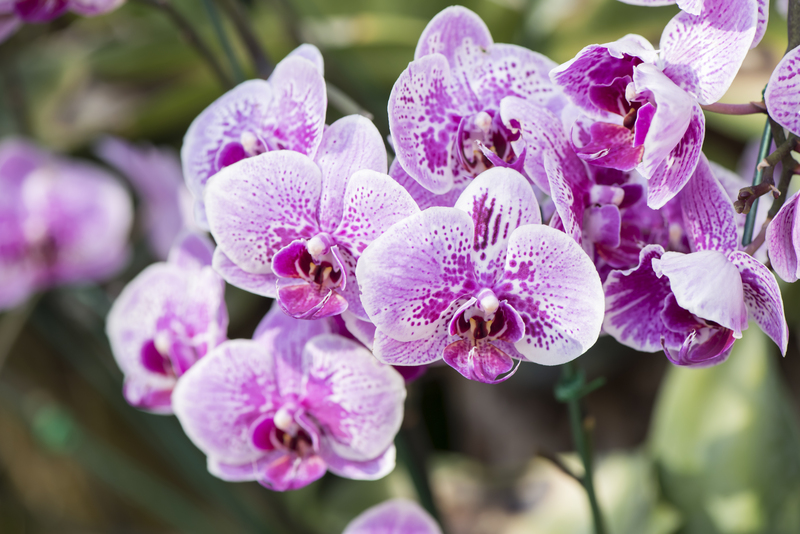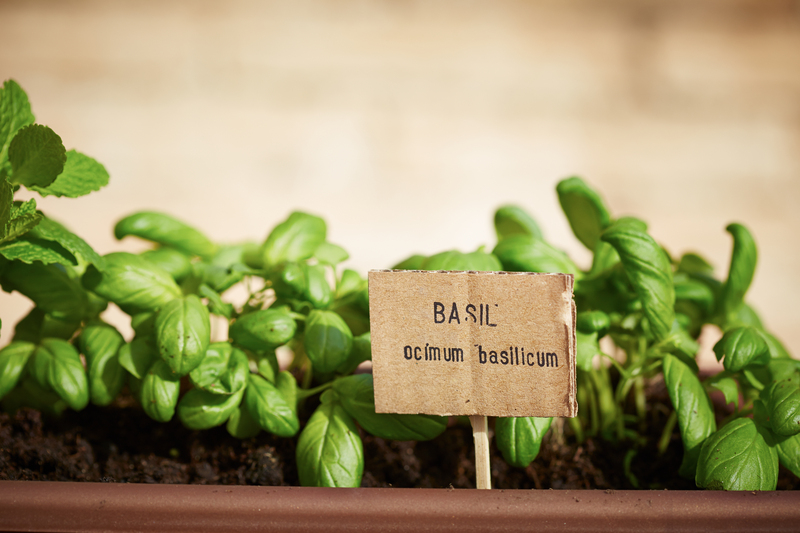Transform Your Windows With Unique Plant Selections
Invite nature into your home and elevate your indoor spaces with an inspiring blend of greenery! The way you style your windows can dramatically change the entire feel of a room. Transforming your windows with unique plant selections not only enhances your view but also provides fresh air, tranquility, and even boosts your mood. This comprehensive guide explores brilliant ideas and expert tips for turning your windowsills, ledges, and frames into lush green displays that reflect your style.
Why Add Unique Plants to Your Windows?
Windows are more than just portals to the outside world--they're natural stages for botanical art. Decorating these spaces with distinctive plants offers several advantages:
- Improved Air Quality: Many indoor plants filter and purify air by absorbing toxins.
- Visual Appeal: Unique selections introduce texture, color, and architectural interest.
- Natural Light Utilization: Many plants thrive in the light near windows, maximizing growth and bloom potential.
- Personal Expression: Curating plant collections lets you share your creativity and personality.
- Connection with Nature: Nurturing living beings supports well-being and mindfulness.
How to Choose the Best Plants for Your Windows
Not all windows are alike, and plant choices depend on light, humidity, temperature, and location. Consider these essential factors before selecting your window plants:
- Light Levels: Determine if your window faces north, east, south, or west for ideal plant compatibility.
- Space Constraints: Consider the width and depth of your windowsill or ledge for both pots and foliage.
- Maintenance: Are you seeking low-maintenance options or are you a hands-on plant parent?
- Purpose: Are you looking for air purification, aesthetics, or edible plants?

Showstopping Unique Plant Selections for Windows
There's more to plant decor than the classic pothos or peace lily. Dazzle your visitors--and yourself--with unusual plant varieties for windows that command attention and ignite conversation.
1. Air Plants (Tillandsia)
Transform your window spaces with air plants. These intriguing epiphytes don't require soil, making them perfect for minimal or modern windows. Arrange tillandsias inside glass orbs, suspend them with invisible wire, or display atop driftwood for a sculptural effect.
2. String of Pearls (Senecio rowleyanus)
For a whimsical touch, introduce string of pearls. Their bead-like foliage cascades gracefully, ideal for hanging baskets or high shelves adjacent to your sunniest window. Their drought tolerance means less fuss for busy plant lovers.
3. Staghorn Fern (Platycerium bifurcatum)
For a statement plant near windows, staghorn ferns are unforgettable. Their antler-like fronds are naturally epiphytic, thriving when mounted on wood boards or hung vertically--an organic alternative to wall art.
4. Black Bat Flower (Tacca chantrieri)
Impress with the dramatic, almost surreal blooms of the black bat flower. With its striking, bat-shaped petals and long tendrils, this exotic plant prefers indirect light and moisture--making it perfect for a lightly shaded window.
5. Oxalis Triangularis (Purple Shamrock)
Invite a pop of color with this vivid plant's triangular, deep purple leaves and delicate pink blooms. Oxalis triangularis loves bright, indirect sunlight, making it ideal for adding elegance to kitchen or dining room windows.
6. Pitcher Plants (Nepenthes or Sarracenia)
Carnivorous wonders! Pitcher plants lure and digest insects, requiring moist soil and plenty of sun. Place on a water tray at a bright, humid window for drama and a natural pest control solution.
7. Hoya 'Krimson Queen'
Hoyas, also called wax plants, boast thick, waxy leaves with pink and cream variegation. Their trailing habit and clusters of star-shaped flowers make them perfect for window frames, shelves, or hanging pots.
Creative Window Plant Arrangements
How you style and display your plants makes a big impact on the atmosphere of a room. Here are the best ways to transform windows with creative plant displays:
Hanging Gardens
- Macrame Planters: Use hand-woven hangers for a bohemian vibe.
- Wall-mounted Shelves: Stagger multiple shelves at varied heights to create a living, layered look.
- Glass Globes: Suspend air plants, succulents, or moss in glass orbs for a floating effect.
Windowsill Oasis
- Succulent Trays: Use shallow dishes for a curated succulent collection.
- Mini Herb Gardens: Grow basil, mint, or chives for fresh, usable greenery right by your kitchen window.
- Terrariums: Display miniature landscapes in glass for a contained, easy-to-care-for ecosystem.
Climbing & Trailing Wonders
- Window Trellises: Train climbing plants like jasmine or hoya elegantly up a simple trellis or mesh panel.
- Trailing Baskets: Consider string of hearts, English ivy, or golden pothos in baskets for cascades of green.
- Living Curtains: Hang multiple strings of pearls or velvet-leaf philodendrons for a lush, dynamic curtain effect.
Best Window Types for Plant Displays
Each window orientation provides unique light and microclimate challenges. To transform your windows with unique plant selections and keep your plants healthy, match species to the best window type:
- South-Facing: Bright light all day. Perfect for succulents, cacti, citrus, or flowering houseplants.
- East-Facing: Gentle morning sun and indirect light in the afternoon. Great for herbs, ferns, and most tropical foliage.
- West-Facing: Warm afternoon light. Ideal for hoyas, begonias, and orchids (with some protection from harsh rays).
- North-Facing: Soft, indirect light. Lovely for shade-tolerant choices like pothos, philodendron, and maidenhair ferns.
How to Avoid Window Plant Problems
While the rewards are huge, windowsill plant displays can present challenges. Keep your unique window plants healthy with these solutions:
- Prevent Scorching: Use sheer curtains to diffuse direct sunlight for sensitive species.
- Insulate from Drafts: Cold windows can chill roots, especially in winter. Move plants an inch or two away or use insulated pots.
- Occasional Rotation: Turn pots every few weeks to promote even growth and prevent leaning.
- Proper Watering: Window plants may dry out faster--monitor soil moisture often.
- Choose Suitable Containers: Make sure pots have drainage holes to avoid root rot.
Window Plant Styling Tips for Every Room
Every space in your home brings unique possibilities for window plant transformations. Here's how to get it right in each area:
Kitchen
- Herb garden: Grow culinary essentials--basil, thyme, oregano--for fresh flavors within arm's reach.
- Compact succulents: Ideal for sunny sills that are often splashed during washing up.
- Mini citrus trees: 'Calamondin' or 'Improved Meyer Lemon' thrive with maximum light, offering fragrant blooms and fruits.
Living Room
- Statement plants: Place large-leafed calatheas or monstera for a dramatic window view.
- Hanging pleasure: Use trailing hoyas or string of pearls in decorative baskets.
- Seasonal swaps: Rotate bloomers like amaryllis or Christmas cactus to keep the display fresh and attractive year-round.
Bedroom
- Air-purifiers: Snake plants or peace lilies filter impurities for a clean, restful atmosphere.
- Cascading plants: Place trailing philodendron or ivy in high window baskets for soft, calming lines.
Bathroom
- Humidity lovers: Choose ferns, calatheas, or orchids that thrive in a steamy environment.
- Compact containers: Use wall-mounted planters or suction-cup window pots.
How to Care for Your Window Plants
Care is essential if you want to maintain a striking window plant display. Use these general tips for thriving, happy plants:
- Monitor Water: Check soil with a finger before watering. Window plants usually dry faster.
- Rotate Regularly: Turn pots to prevent uneven growth toward the light.
- Clean Glass: Dust both leaves and windows to maximize available sunlight.
- Feed in Season: Use diluted fertilizer during spring and summer for growth spurts.
- Prune Routinely: Trim dead leaves and spent stems to encourage new growth.
- Check for Pests: Aphids, spider mites, and mealybugs can cluster on leaves near glass.

Frequently Asked Questions About Window Plant Transformation
Which plants are best for low-light windows?
Choose low-light tolerant plants like ZZ plant, snake plant (Sansevieria), or philodendron for north-facing windows or shaded sills.
Can I grow edible plants on my windowsill?
Yes! Herbs like basil, chives, parsley, and compact tomatoes do well in bright windows. For a unique edible choice, try microgreens or baby leaf lettuce.
How should I style plants in a small window?
Opt for vertical solutions like wall-mounted shelves, suction-cup pots, or hanging globes. Miniature plants and air plants work well without crowding the space.
Are there window plants that repel bugs?
Culinary herbs such as mint, basil, rosemary, and even pitcher plants can help repel household pests or attract and digest them.
Conclusion: Your Windows, Reimagined
The potential to transform your windows with unique plant selections is truly limitless. Whether you prefer sculptural air plants, dramatic ferns, or trailing succulents, every window can become a living, breathing work of art. From practical considerations like matching light to plant needs, to creative styling--each choice adds vibrancy and well-being to your everyday life. Bring nature closer, experiment boldly, and let your windows tell a fresh, green story!
Ready to revamp your windows? Share your favorite plant picks, styling ideas, and window gardening successes in the comments below!